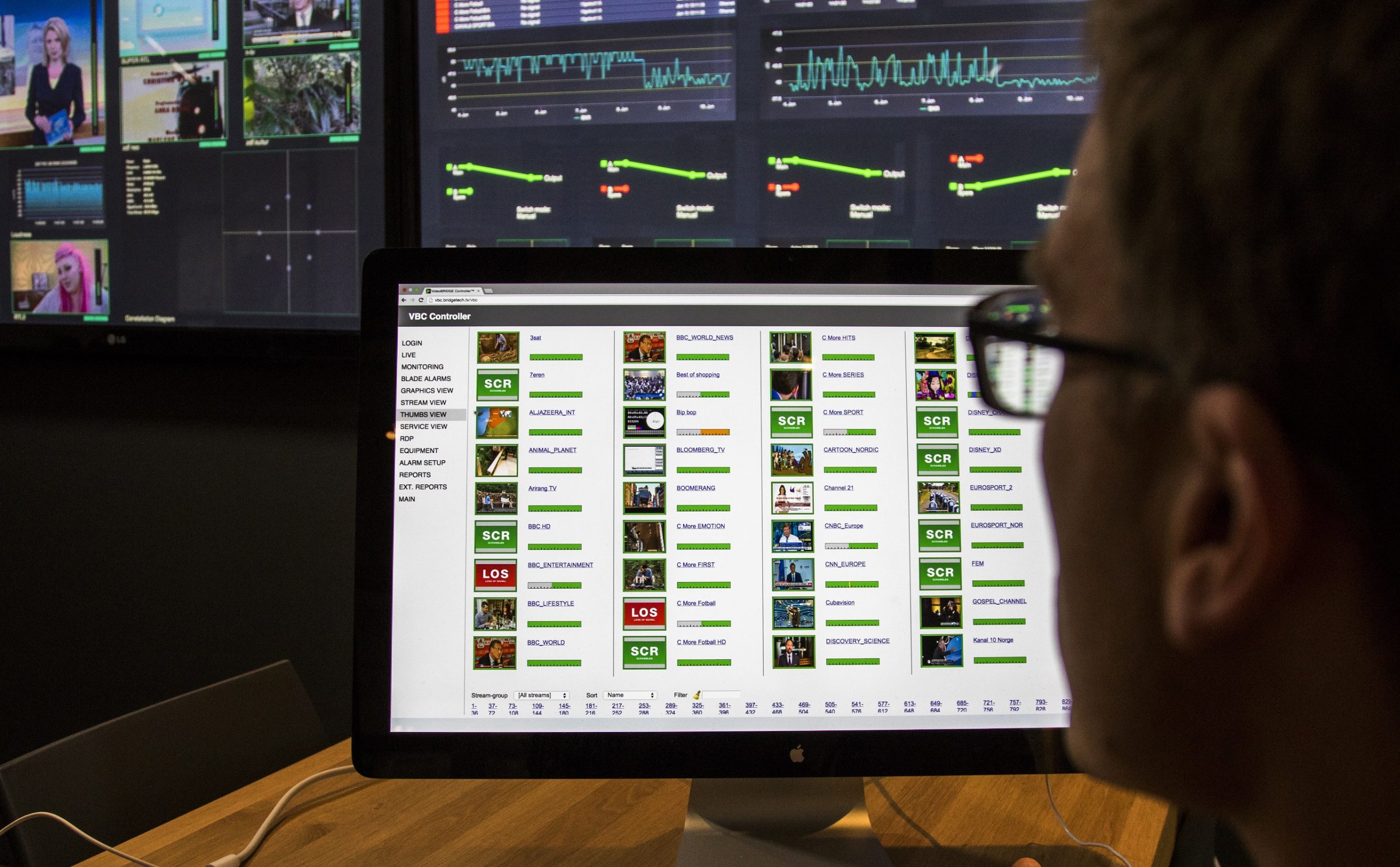For manuals, specifications and ordering codes, please contact your sales representative.
QTT Application
The QTT Application - A system for monitoring DRM encrypted video streams
A successful OTT service deployment relies on several components working flawlessly together. In many cases the overall architecture is geographically dispersed and on occasions also not administrated underneath the same economic entity. This potentially leads to hard-to-pinpoint technical issues as well as possible contention on responsibility. The QTT Application from Bridge Technologies is a solution tailored to help with this, assigning autonomous Workers to playback DRM protected OTT services. The system continuously authenticates itself against the platform’s DRM system, receiving license to playback live services, retrieving selected services from the CDN, before playback on powerful Mac-Mini hardware just as a normal end-user would.
This approach to end-device monitoring provides continuous assessment of the correct operation of the OTT Video Platform, but from a centralized and well-known point in the network. The QTT Application works together with the VB330 and VBC for QoE picture analysis, timeline storage of thumbnails, thumbnail mosaics and powerful SLA reporting functionality. The QTT application and its supporting elements, are well suited for cloud deployments or on-premises installations. It also allows for pin-point verification of CDN behaviour at a particular geographic region by aiming the client accesses towards these CDN servers in the network. This is achieved through the use of user-configurable text tokens inside the application.
The QTT Manager – Overall architecture
The QTT Application Manager assigns Players to playback DRM protected services automatically, optimizing on factors such as stream load and redundancy. Continuous streams of decrypted thumbnails are retrieved and forwarded to VB330 for further processing, logging and picture analysis.
The architecture has natively built-in redundancy, provided sufficient Players units are provisioned during commissioning. Should one Player unit fail, the remaining units will pick up the additional load automatically without any user intervention. For regular H.264 HD-based content it is typical that one Mac Mini worker device can handle up to 15 streams concurrently.
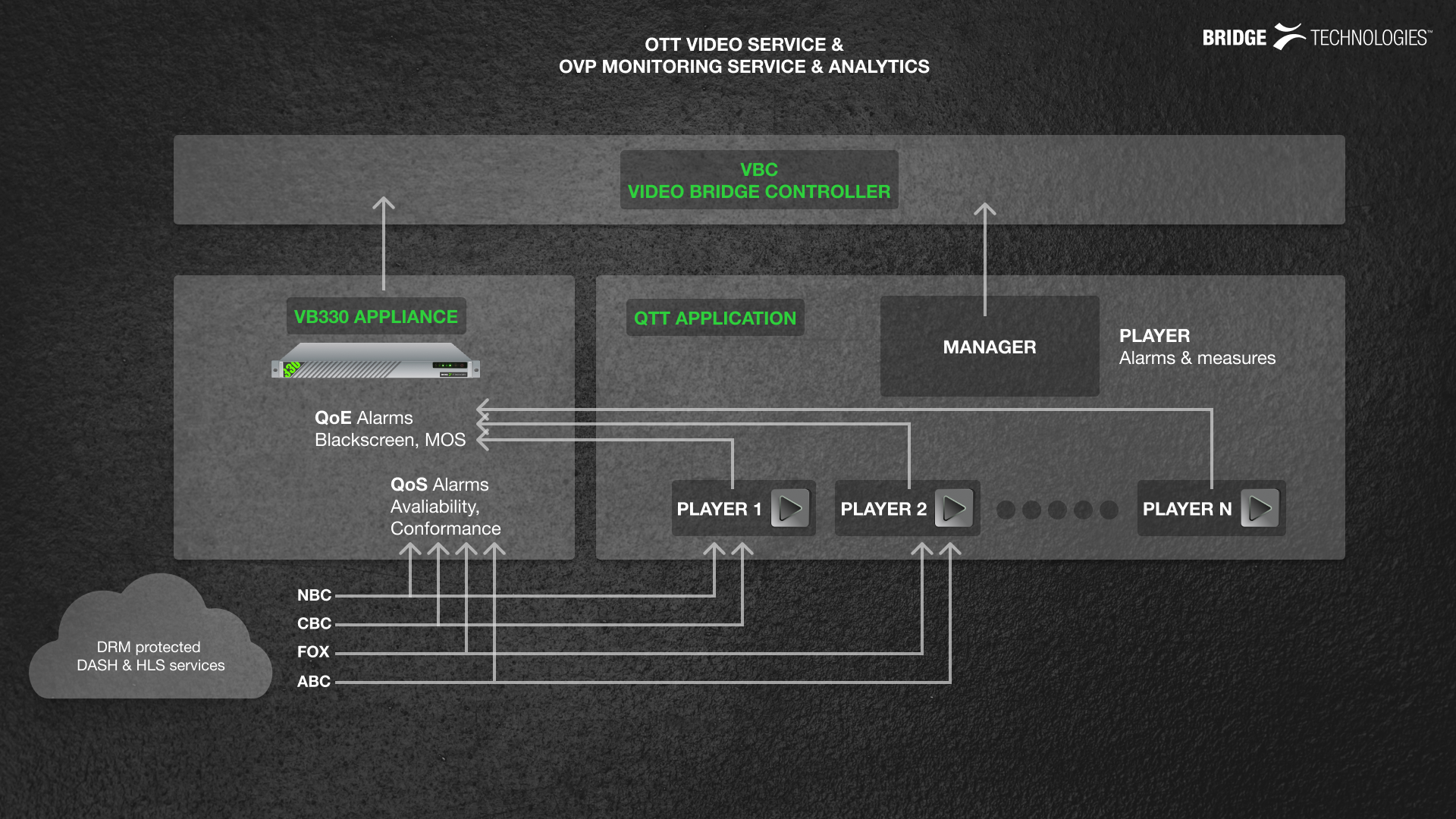
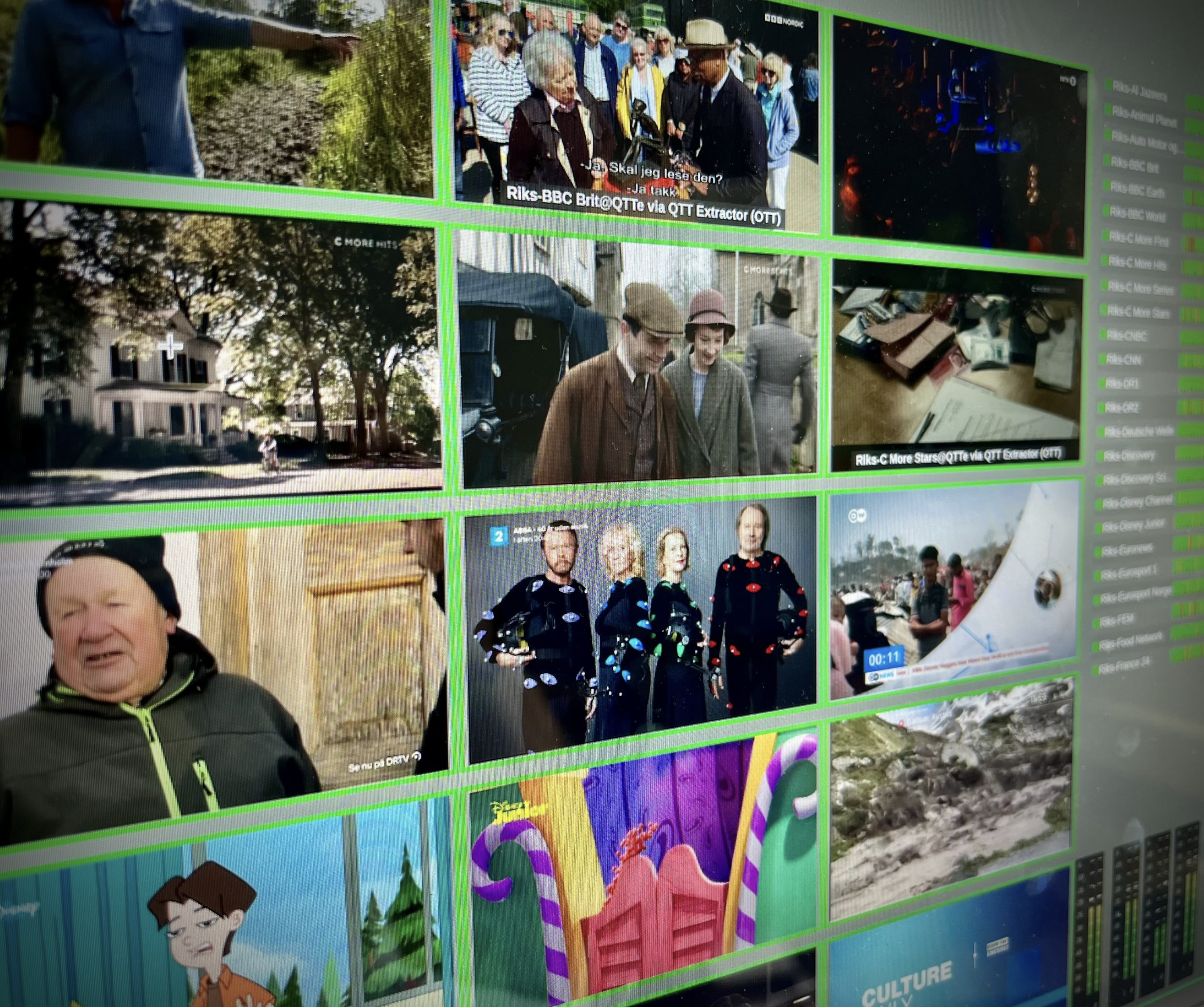
Reference OTT Player Client – The QTT Players
The QTT Application is best deployed operating as a reference OTT client platform at a well-connected and defined point in the customer network. In this manner it behaves as a regular – albeit a very busy – OTT subscriber, negotiating the OTT platform’s Authentication and Authorization system before playing back OTT services for several minutes, then starting the process all over again. During this routine, the system automates verification of several key metrics. Some of the more notable ones include Time to Playing, Authentication issues, Interval to First Thumb and Lowrez after ramp-up. Clever usage of token ID strings makes it possible to also steer traffic to a particular CDN location for load testing during issues investigation, or just regular load monitoring of critical infrastructure during peak load situations. All the measurement data gathered is forwarded to the QTT Application and eventually VBC for further processing.
The QTT Manager - Streams and Tests
The QTT Manager operates with the concept of defining several Tests that can then be associated with each of the OTT Streams that are to be monitored. The operator has a microTimeline alarm view, indicating the alarm state over the last 2 hours, 24 hours or 7 days. A thumbnail of the descrambled service is shown next to the microTimeline. By clicking on the thumbnail, a larger version of the video is shown. Each thumbnail is tagged with a time code and a sequence number. The Workers tab gives the user an overview and status of the workers currently in operation.
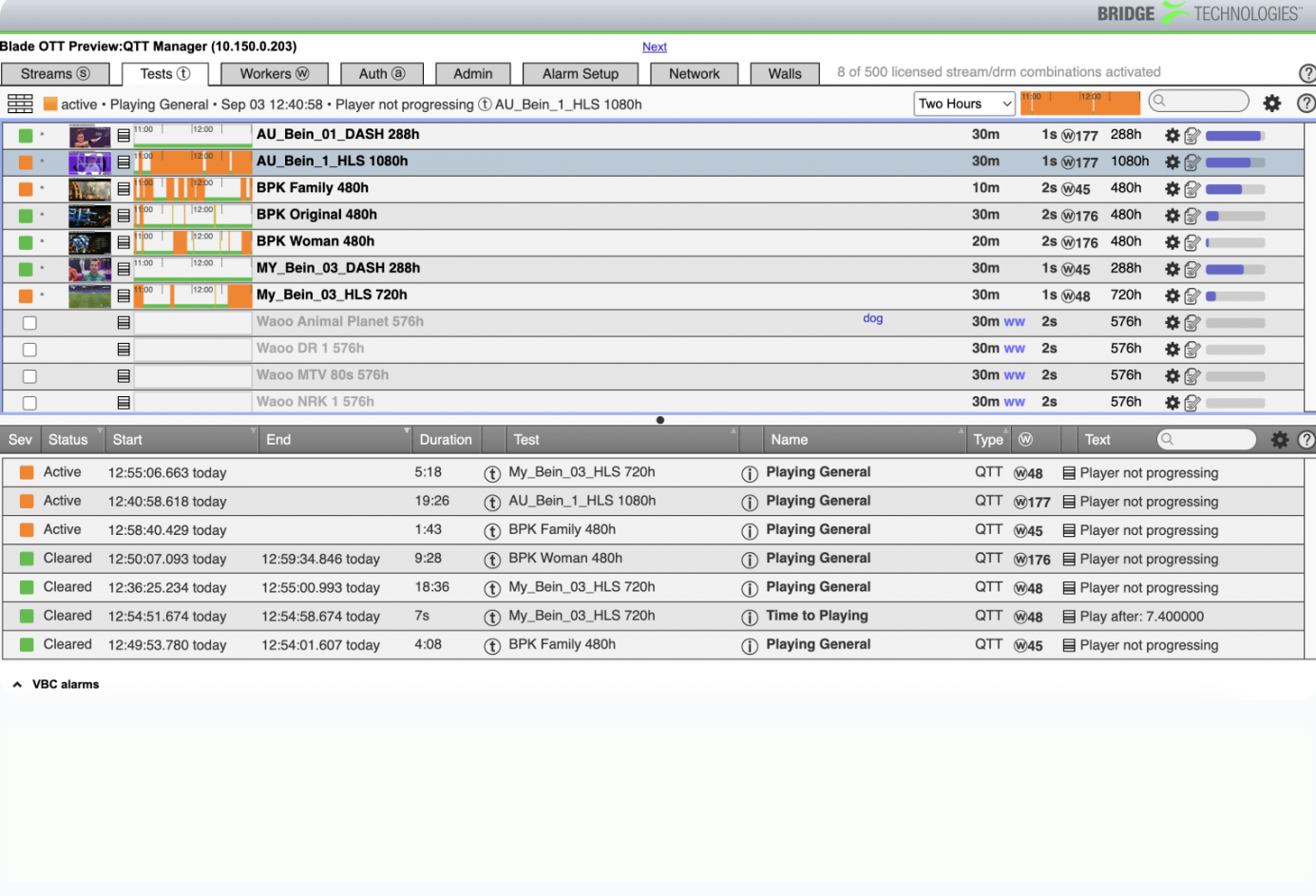
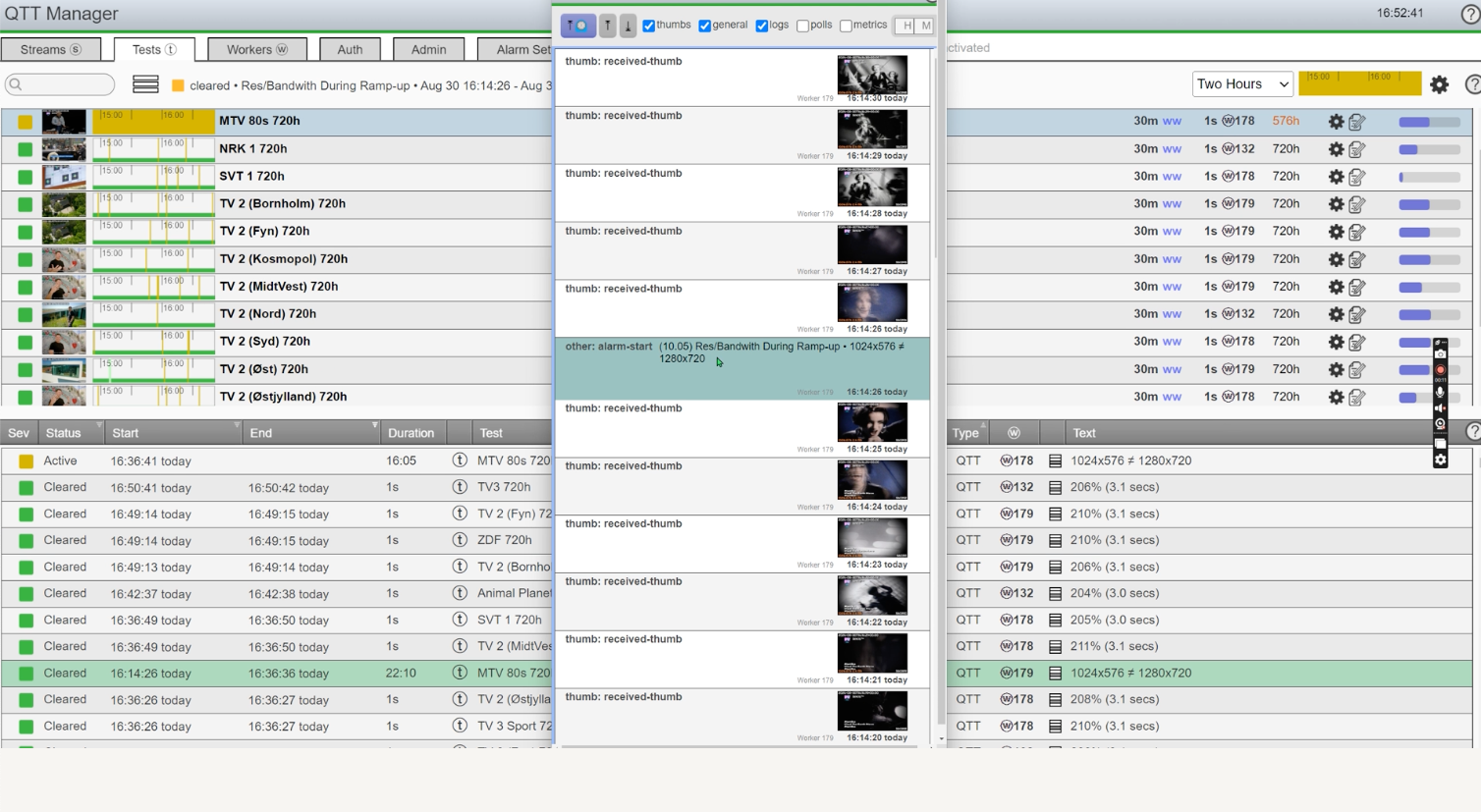
The Player event list
On the QTT Manager, Player events gathered by the individual Players are stored and shown in an events-list per test. These are particularly useful for deep diagnostics and fault finding and can give the system administrator good pointers to any potential issues the system might be experiencing. Events are stored with a time horizon of 7 days.
QTT Playback alarms
The QTT Application generates several Alarms based on events and errors coming in from the players, browser play system and manager itself. The alarm severity can be configured into 5 different severity levels. The checks possible by operating in much the same manner as an end-device ensures a much deeper overall system verification than would otherwise be possible by just looking at the video asset itself. Typical faults captured range from authentication login issues, delayed playback, DRM decryption through to access issues with the stream URL itself. All the alarms from the QTT Manager are forwarded to the VBC for further aggregation and logging with alarm sources from other devices.
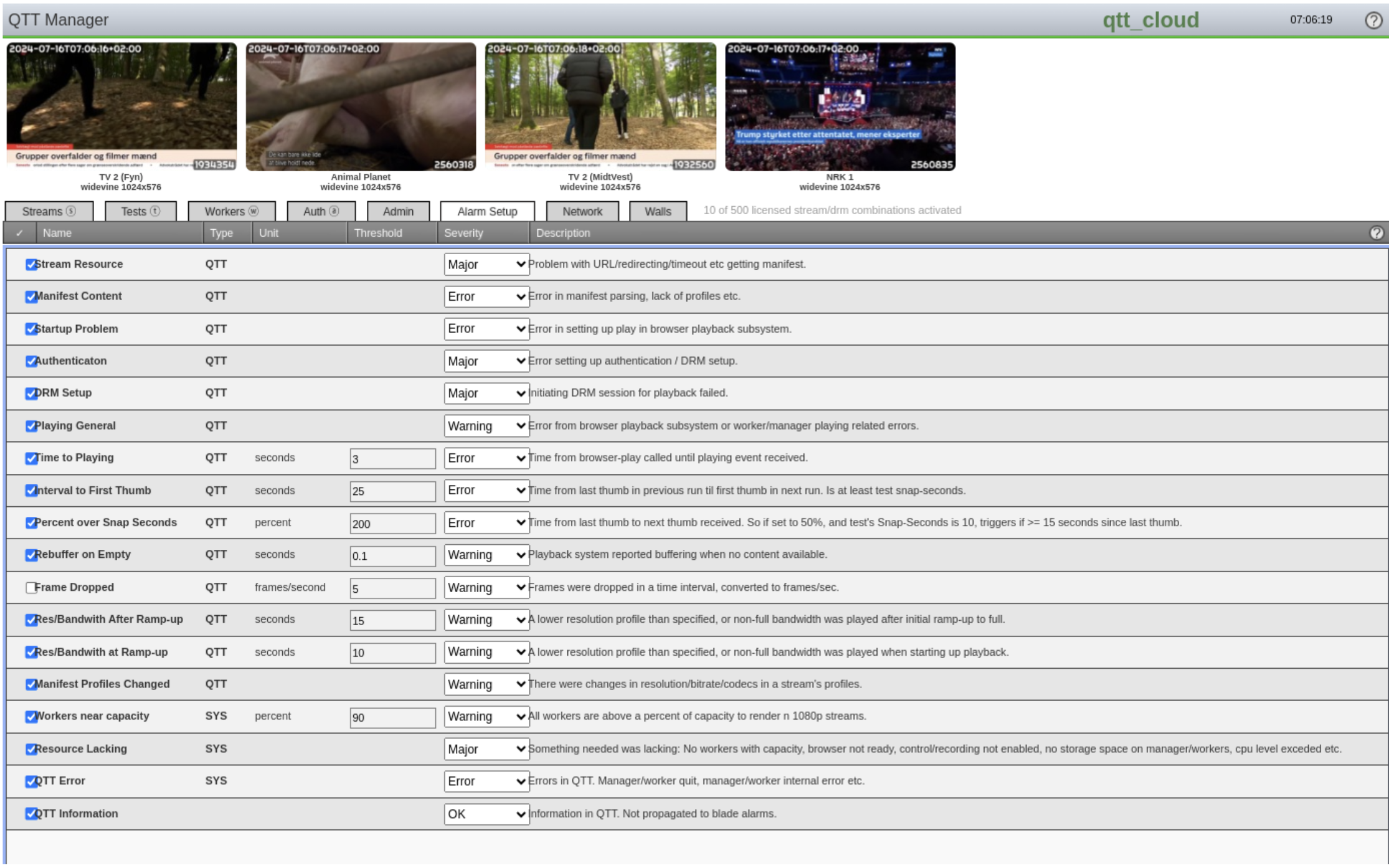
VBC Integration, Timeline and Licensing
The QTT Application generates decrypted thumbnail versions of the content being monitored. These are then transferred to a regular VB220/VB330 Appliance/Software probe for blackframe/freezeframe analysis and timeline logging. This allows for content issues such as frozen content to be discovered and logged in time using the Content timeline option on the VB330
Since the QTT Application is inherently tied to the DRM system in use, there is a need for a certain level of initial integration work to get the system operational. The complexity of this integration will depend on the customer application, but it is typically not a large task since it involves many of the same steps that an end-client browser player integration would have to go through. Currently, successful integrations have been done in systems built with Castlabs and Verimatrix with more to come. The system offering includes a predetermined amount of engineering development and support time to cater for a successful integration in cooperation with the customer.
The QTT Application is licensed on a per-stream basis in steps of 50 streams. Each QTT Worker can handle around 15 streams, depending on the content resolution and type.
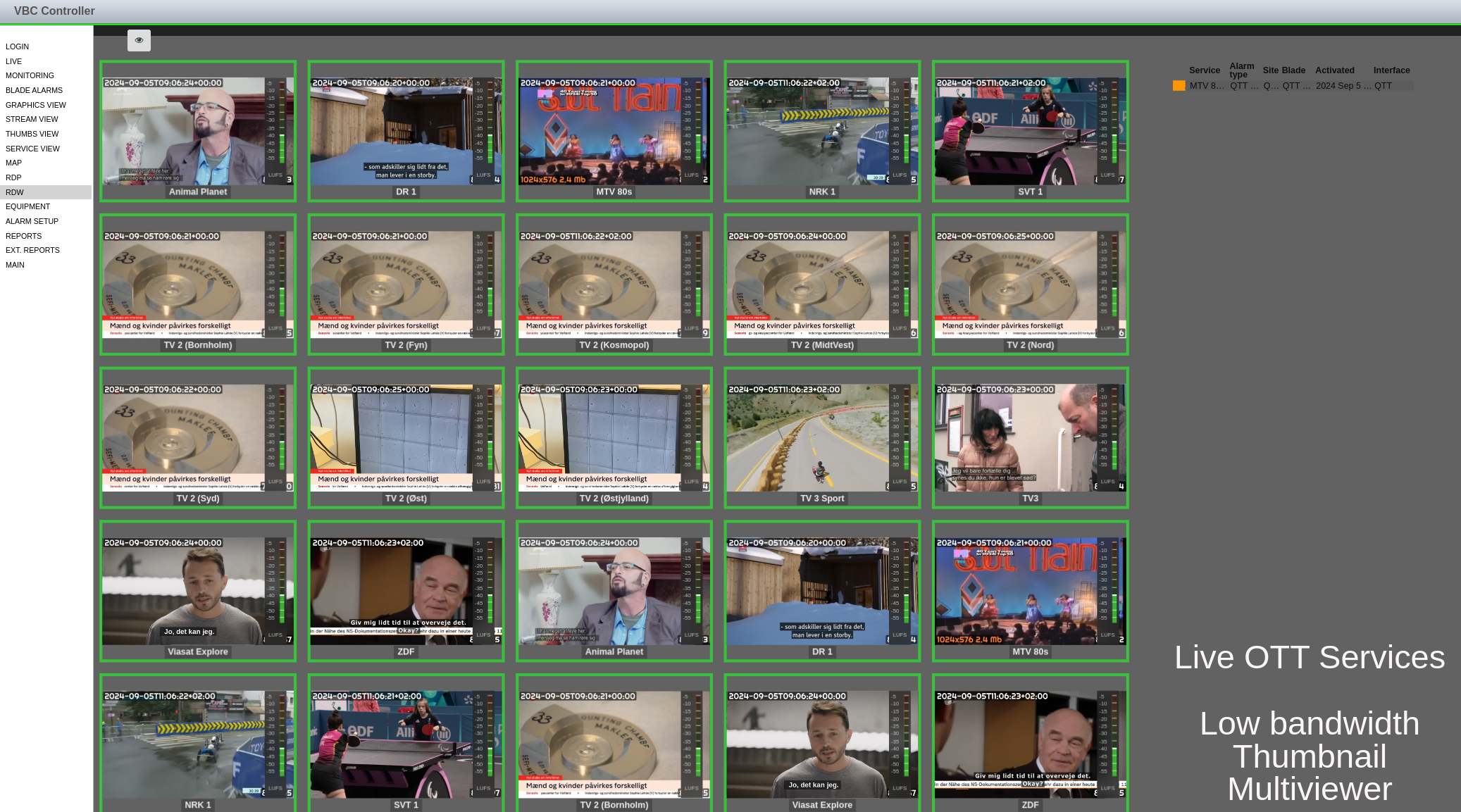
Remote Data Wall (RDW)
The QTT manager integrates with the VBC and allows the Remote Data Wall functionality to be used for building up a low bandwidth thumbnail multiviewers; accessible from anywhere via a web browser instance.
VBC Integration and SLA Reporting
The VBC allows for Extended Reports to be automatically or manually generated and distributed as PDF’s. These have applications either internally in the organization as discussion material for the technical team, or externally towards customers or suppliers when there is a need to prove carriage quality over time. Each report can be customized with logos. The operator decides what tests to include in the report as well as the SLA level in the form of a percentage.
